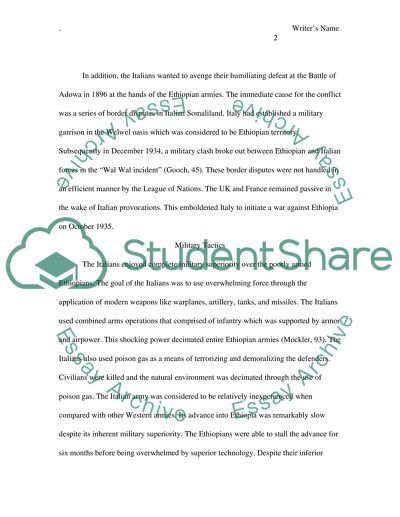Cite this document
(“Italy's invasion of Ethiopia in 1935 Research Paper”, n.d.)
Retrieved from https://studentshare.org/family-consumer-science/1404698-italy-s-invasion-of-ethiopia-in
Retrieved from https://studentshare.org/family-consumer-science/1404698-italy-s-invasion-of-ethiopia-in
(Italy'S Invasion of Ethiopia in 1935 Research Paper)
https://studentshare.org/family-consumer-science/1404698-italy-s-invasion-of-ethiopia-in.
https://studentshare.org/family-consumer-science/1404698-italy-s-invasion-of-ethiopia-in.
“Italy'S Invasion of Ethiopia in 1935 Research Paper”, n.d. https://studentshare.org/family-consumer-science/1404698-italy-s-invasion-of-ethiopia-in.


